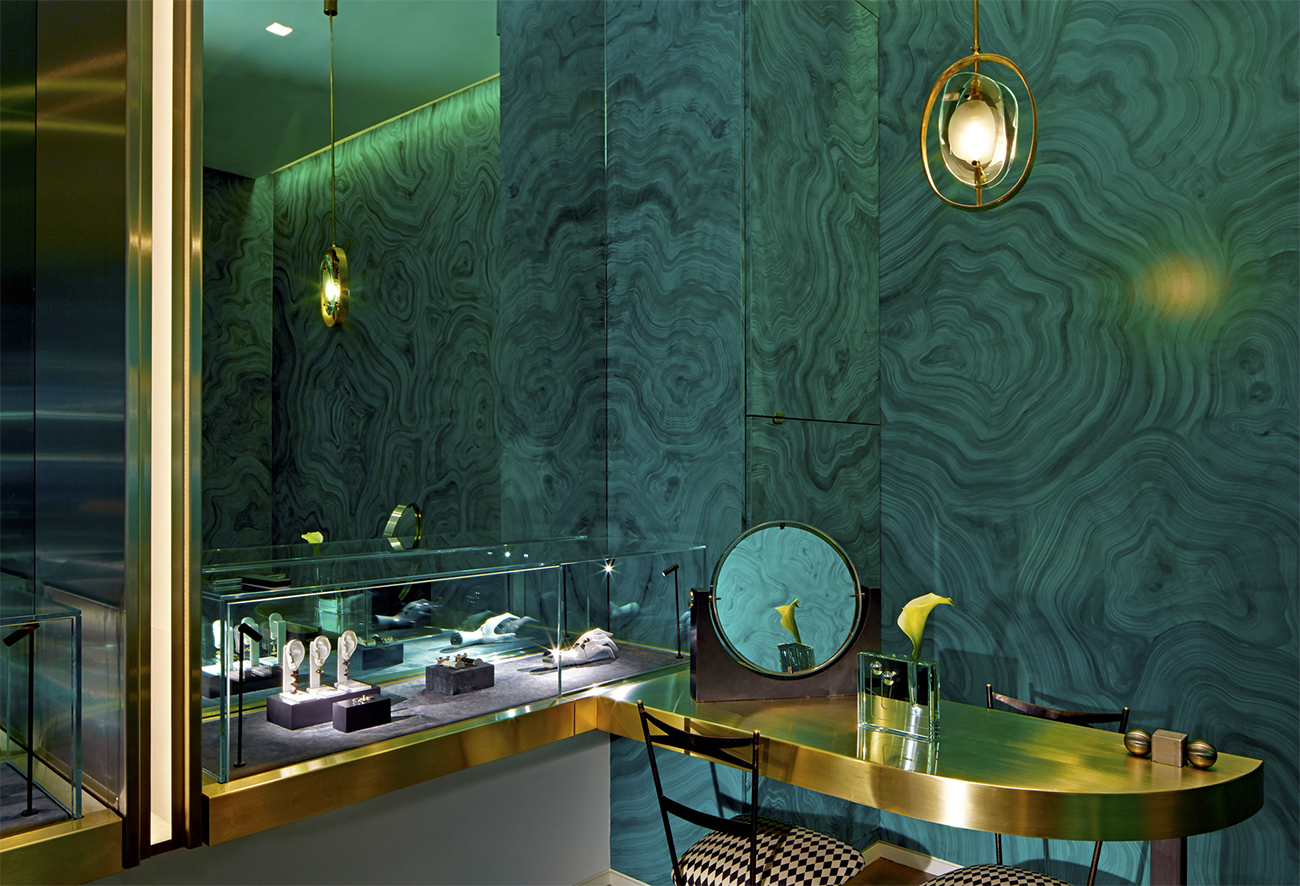Rafael de Cárdenas Designs Delfina Delettrez's First London Boutique
/Rome-based Delfina Delettrez collaborates with New York and London-based Rafael de Cárdenas’ “Architecture at Large” to create a dynamic, futuristic interior gallery-retail space that looks back to Italian tradition, then forward to the future of innovation, and finds the common surreal ground between the two.
Delfina Delettrez Fendi is a designer and jeweler based in Rome, Italy, and her young company which was founded in 2007 is now seeing its second store, opened on Mount Street in London. The store, which lies in an impressive historical brick building under arched entrances, is a boutique gallery showcasing the Delettrez collection of fine jewelry that projects traditional Italian techniques into romantically postmodern dimensions. Her company recruited New York based architect and designer Rafael de Cárdenas, whose design firm, Architecture at Large has expanded from New York to London since its founding in 2006.
Delettrez exhibits her collection over two floors and 650 square feet of interior space. The lower area is a dedicated private lounge that she leaves open to the synergistic influence of varying art works, collaborations, and events, such as her kinetic pieces like the HANDroid Platinum Edition rings, which are displayed on an automated robotic hand. The jewelry pieces themselves are chiefly inspired by traditional Italian craft, while their accoutrements and the technique with which they’re shown are more surreal and postmodern.
Mirrors are one such example of this, used in the store to create an infinity effect, as well as to distort the perception of the jewelry as floating pieces of spectacle and magnificence. Colors are perceived in both matte to gloss finishes, causing the space to take on on a very retro-Egyptian look, with golds, deep greens and blues in abundance, lending a dark and mystical look to the interior, all of which are lent added exuberance via their infinite mirrored reflections.
At the same time, the overriding aesthetic is meant to be futuristic, not ancient--this unexpected mix of metals and materials and surfaces, of which the 1950s Italian modernist furniture is, interestingly enough, meant to accentuate, not detract from.
Aside from the jewelry, the most enticing component is the malachite tromp l’oleil, the deep green painting along the back wall, which is a functional piece, in that it seductively draws in customers and invites them into the lower area; a synergetic work, in being the agreed-upon high point of the collaborative process in both jeweler and designer’s opinion; and finally, a thematic locus, as it bolsters the distorted futuristic vision of the Delettrez name.







